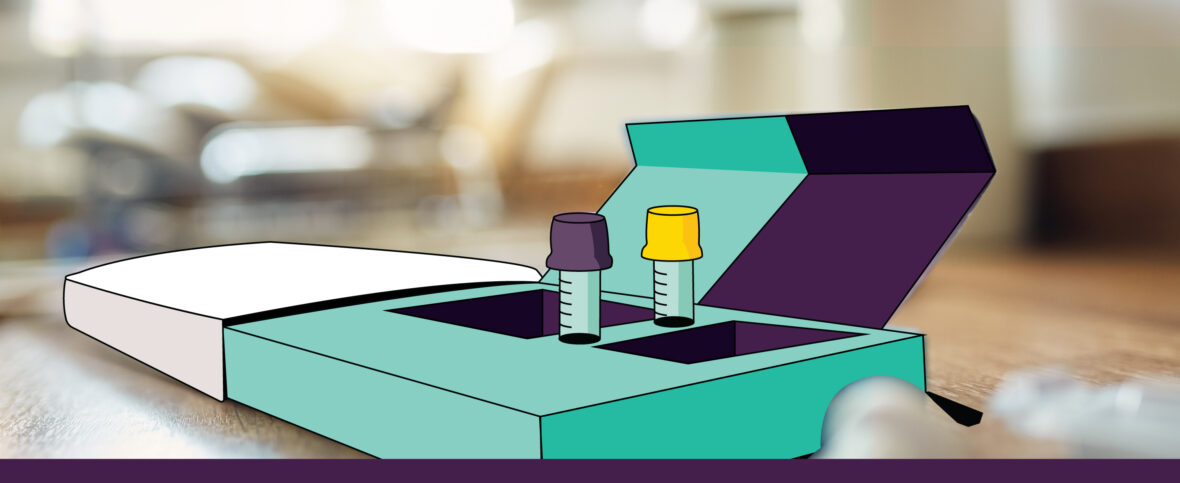See all > Sexual health

What you should know about Canada’s first self-test for HIV
Human immunodeficiency virus (HIV) treatment has evolved considerably in the past few decades. A new form of HIV test was recently approved by Canada’s federal government. It’s a rapid self-testing kit called the INSTI HIV Self Test. It’s still not available in stores, but you can order testing kits directly from INSTI. Here’s what we know about the test, and the current state of HIV amongst Canadians.
How does the test work?
The INSTI HIV Self Test is a point of care test, meaning it can be done from wherever you’re located. By placing your finger in the centre of a small console, the Self Test draws a drop of blood from your fingertip while keeping the blood contained. Results appear in less than a minute without sending your bloodwork to a lab. Usually, when you go to a lab, your results return in 1-2 weeks.
There are three types of HIV tests in Canada
Antibody tests
The INSTI HIV Self Test is an antibody test. Antibodies are proteins that your immune system creates when an infection like a virus or bacteria enters your body. They’re part of the immune-response system that kicks in when your body senses an unwanted intruder. Antibodies live in your blood and mucus. When released, they bind to the unwanted virus or bacteria to neutralize it. Antibodies do this either by destroying the intruder, or blocking it from entering healthy cells.
Antigen tests
These tests identify both HIV antibodies and HIV antigens in your bloodstream. Antigens are foreign or toxic substances that trigger your body’s immune response. When antigens are present, you begin producing antibodies.
If you’ve contracted HIV, a specific antigen called p24 is detectable in the blood. It’s possible to detect the antigen before your body begins producing antibodies. Detecting the antigen can help you know your HIV status sooner.
Nucleic Acid Tests (NATs)
NATs look for the HIV virus itself in the bloodstream. They determine something called your viral load. Just like any other virus, the amount of HIV in your system can go up and down. High viral loads, above 100,000, are more likely to make you feel ill and increase the likelihood of passing the virus on to others.
What else should I consider about self-testing for HIV?
There are a few other factors to keep in mind when it comes to HIV self-tests.
Time windows
HIV isn’t immediately detectable via testing. It takes time for your body to react to the virus once it enters your system. That means it also takes time for antibodies to develop, and for the viral load to reach a level where it can be confirmed with blood tests. For this reason, test results are most accurate around three weeks after exposure.
Testing earlier may result in a false negative. That means the test comes back negative, not because you don’t have HIV, but because the HIV is still undetectable.
Accuracy
Both the INSTI HIV Self Test and traditional lab tests have the same accuracy rate of 99.5%.
It’s always recommended that further testing be done if a self-test comes back positive. There’s also the possibility of human error with a self-test. A medical professional can help you confirm your results.
Mental health
With the right medication, lots of people live healthy, long lives with HIV. Yet despite medical progress, HIV is still a stigmatized illness. It can be traumatic to learn that you’re HIV positive.
When you do a self-test, you may get difficult news at a time when you’re by yourself. To prevent going through a diagnosis alone, consider having your doctor, therapist, or a loved one nearby for support.
What should I do if I’ve been exposed to HIV?
Getting a rapid test isn’t the first thing to do if you think you’ve recently been exposed to HIV. Common ways to contract HIV include unprotected sex with an HIV positive person, or sharing needles during drug use.
The first thing to do after recent potential exposure is go to the emergency room. They can give you post-exposure prophylaxis (PEP). It’s a medication that reduces the risk of you contracting HIV if you take it within 72 hours of exposure. Studies are still being done, but early research shows it can reduce your likelihood of contracting HIV by 80%.
The state of HIV in Canada
Approximately 63,000 people in Canada are HIV positive. One of the best ways to stop the spread of HIV is testing people who don’t know they have it. In Canada, approximately 14% of people living with HIV don’t know their HIV status. That’s why self-test kits are the approach recommended by the World Health Organization, in addition to lab testing. They’re a fast and easy way to inform people of their status so that they can seek out care.
Canada’s approval of the HIV self-test kit could help slow down new cases of HIV in Canada. The more people who know their status, the better chance we have at stopping the spread.
The information presented here is for educational purposes and is not meant to replace the advice from your medical professional.
When using virtual care, all medical treatment is at the sole discretion of the provider. Virtual care is not meant for medical emergencies, and your provider will determine if your case is appropriate for virtual care. If you are experiencing an emergency like chest pain or difficulties breathing, for example, please call 911 or go to your nearest emergency room.
Trusted by millions of Canadians
Get started now

We're trusted by millions of Canadians
Join millions of Canadian families who enjoy 24/7 access to medical care within minutes.
Get started now4.6 score
5K+ Trustpilot reviews
Do you need medical care today?
Trusted, experienced doctors and nurse practitioners are ready to see you.
